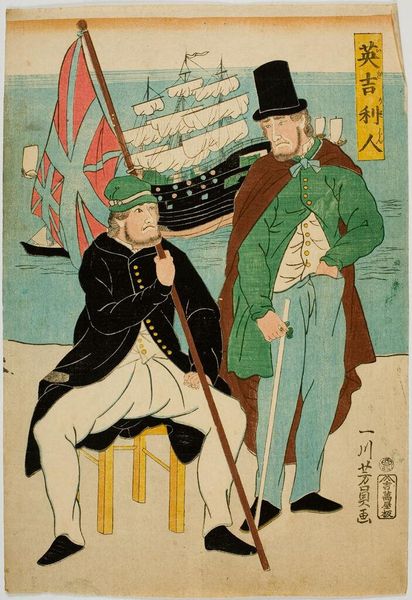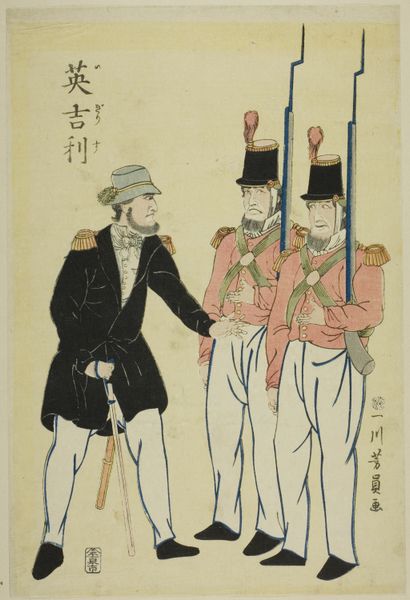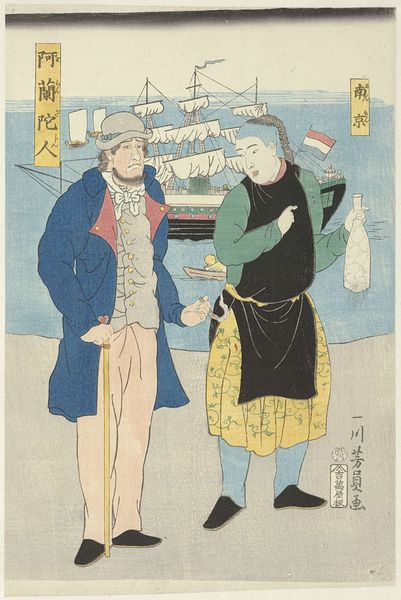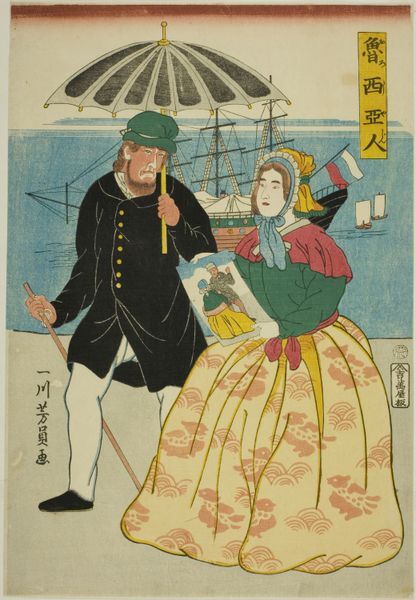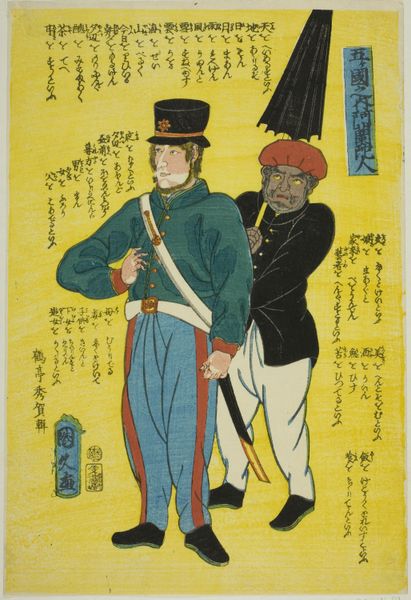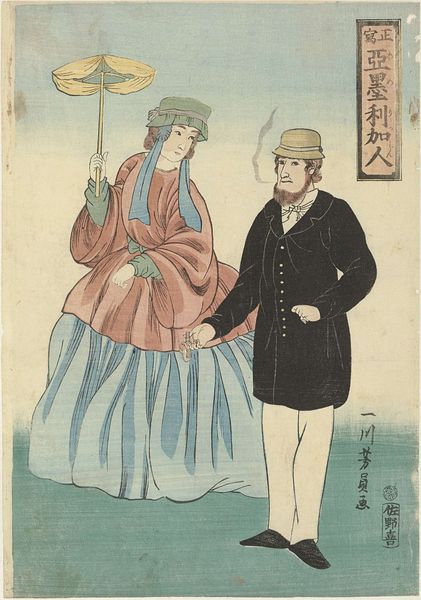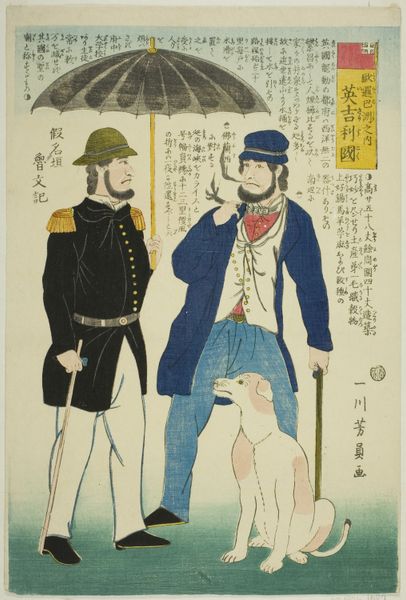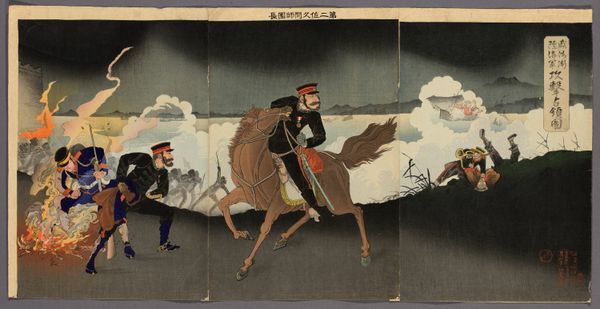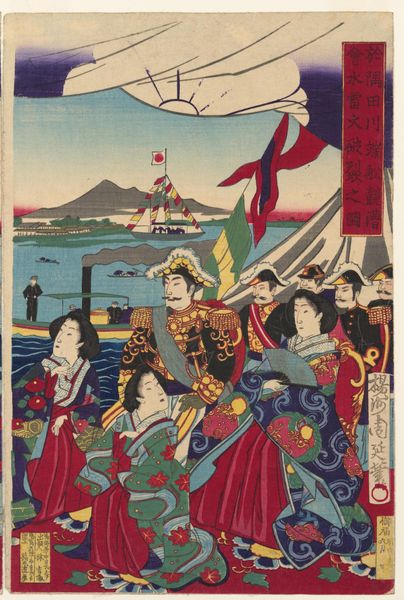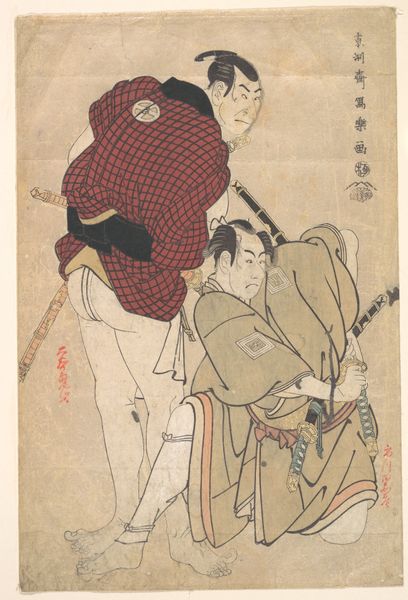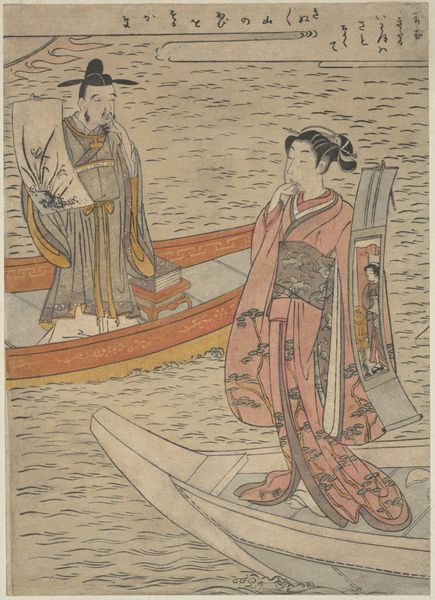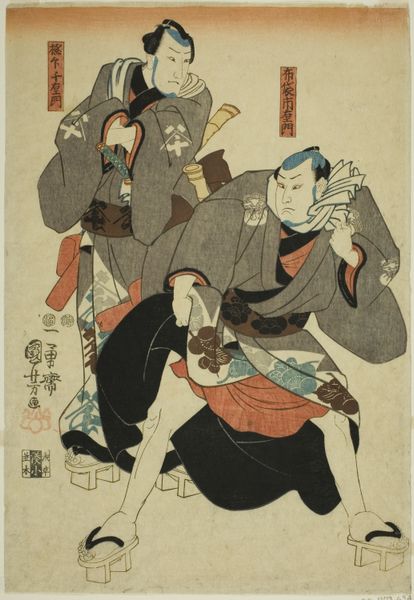
print, woodblock-print
#
portrait
# print
#
caricature
#
asian-art
#
caricature
#
ukiyo-e
#
woodblock-print
#
genre-painting
Copyright: Public Domain
Curator: What a striking print! This is "Englishmen (Igirisujin)" by Utagawa Yoshikazu, made in 1861. The Art Institute of Chicago holds this particular woodblock print. Editor: It has a charming awkwardness, wouldn't you say? The color palette is light, the blue in the background offset by these robust, cartoonish figures. What kind of statement about cross-cultural exchange do you suppose the artist was attempting to make? Curator: It’s definitely a statement piece. Look closely, and you’ll see how Yoshikazu portrays the Englishmen. The flag, the ship, all symbols of power, yet these men are… caricatures. Perhaps mirroring Japanese sentiments about foreign encroachment during that period. The tilted head, the posture… the artist deftly plays with power dynamics. Editor: Interesting that the artist chose a woodblock print, which is inherently a reproducible medium. Ukiyo-e prints were popular commodities. I wonder about the intended audience and the context of circulation of these kinds of images in a society grappling with foreign presence. Also, how does the artist's labor factor? A master carving the woodblocks and multiple printings suggests the production was designed for wide distribution. Curator: That’s a key point. These images weren’t simply about documentation. The choice of Ukiyo-e links to the floating world, suggesting a critical viewing rather than straightforward approval or disapproval of foreign powers. In visual terms, those colors evoke feelings, especially the rosy tone surrounding figures contrasted to cool and even tone background water. These nuances add to a sense of distance. Editor: Absolutely, and consider the very materials. Wood is plentiful in Japan. Was it readily available or rationed and regulated for artisans? Pigments—where did these colours come from? What would their trade value be relative to materials? The social framework within these things exist makes it such a compelling object. Curator: I think it adds depth to our understanding about how such representation operated. Beyond trade, how the cultural perception shifts, influenced both by economic interaction and traditional views. The lasting effect through a medium designed for continuous cultural reaffirmation… Editor: I agree completely. Looking at art through the lens of material history provides such an informative scope.
Comments
No comments
Be the first to comment and join the conversation on the ultimate creative platform.
